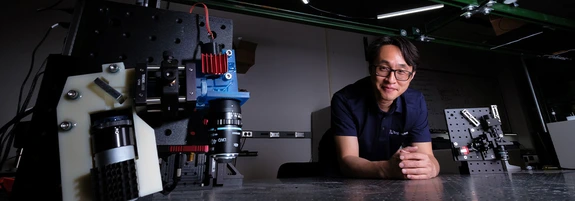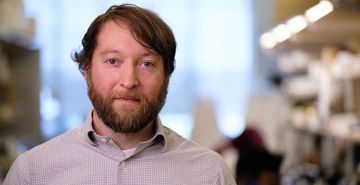
Research
Changing the Way of Medicine
Researchers in the UA Department of Biomedical Engineering are combining technology and medicine like never before to create products that improve care and outcomes for patients with cancer, heart disease and vision loss.
They are developing imaging to detect ovarian cancer in its earliest stages, creating artificial hearts and retinal implants, developing wearable health monitor technology and improving surgical procedures for brain cancer.
Focus Areas
UA biomedical engineering research focus areas include the following:
- Biomedical imaging and spectroscopy
- Biomedical informatics
- Bioinstrumentation and devices
- Biomaterials and tissue engineering
- Biomechanics
- Biosensors
- Cardiovascular biomedical engineering
- Neuroengineering
- Nanomedicine
Project Highlight
Education by design
Students working in the Peter and Nancy Salter Medical Device Design Lab get hands-on experience building and testing their own wearable medical devices and sensors.
"They allow professors to put students into engineering dreamland."
Philipp Gutruf, biomedical engineering associate professor

Research Centers and Facilities
BME faculty and students collaborate extensively across UA colleges in the following major centers:
- Arizona Center for Accelerated Biomedical Innovation
- BIO5 Institute
- College of Medicine, Center on Aging
- Data Science Institute
- Evelyn F. McKnight Brain Institute
- Institute of the Environment
- Sarver Heart Center
- Arizona Emergency Medicine Research Center (AEMRC) Tucson
- Research, Discovery & Innovation
See UA College of Engineering-affiliated Research Centers and Institutes.
Featured Video
Wearable Innovations
Philipp Gutruf
Device for Earlier Ovarian Cancer Detention
Jennifer Barton
Sensors for Medical Diagnostics
Jeong-Yeol Yoon and Judith Su
Fast Facts
19th
R&D ranking, public universities
(National Science Foundation)
$4 million
annual research expenditures (2024)
9+
research centers and labs
